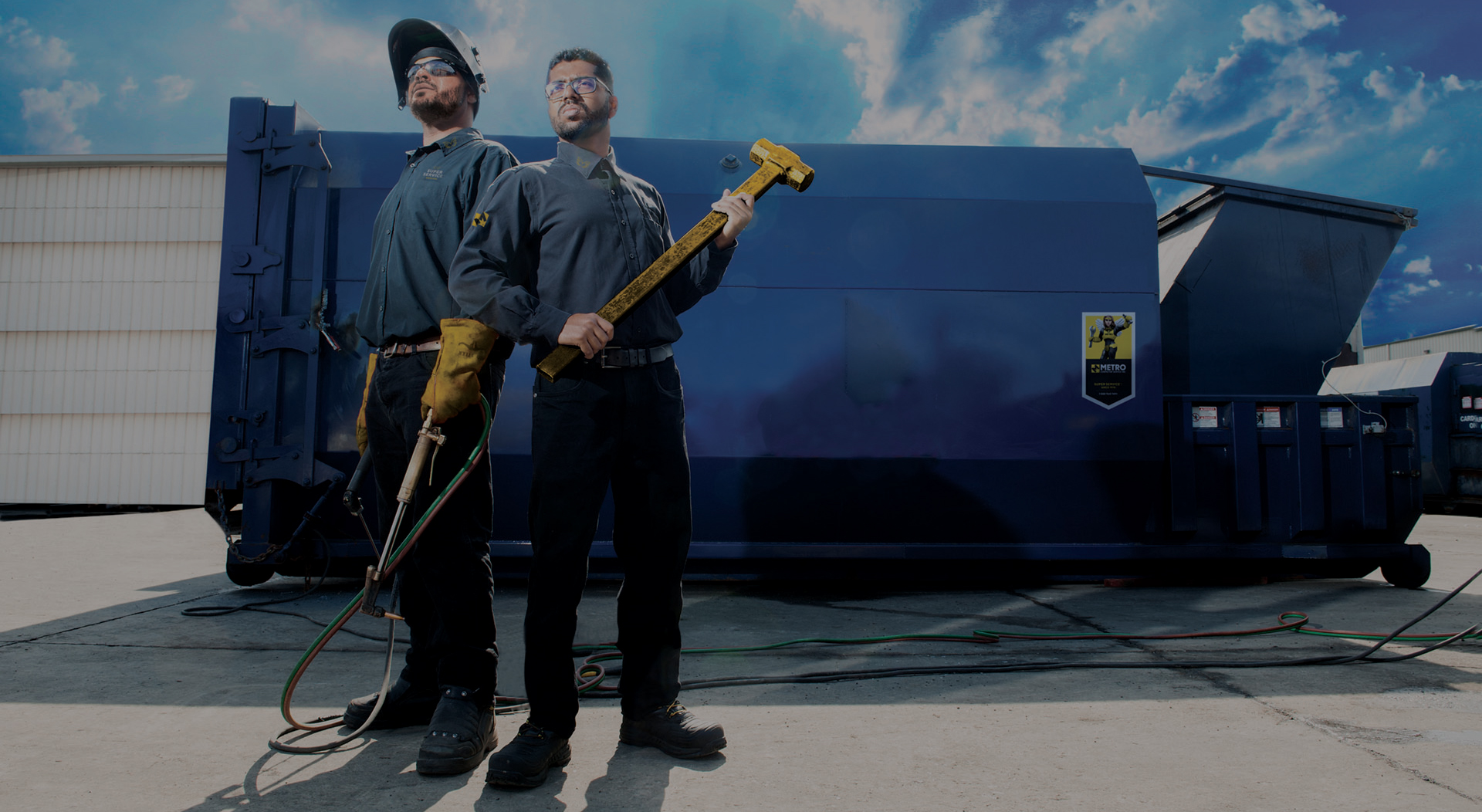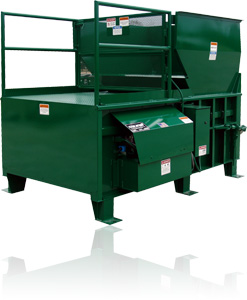Discovering the Crucial Role of Waste Equipment in Modern Recycling Processes and Sustainable Garbage Disposal Practices
The critical duty of waste equipment in modern reusing procedures emphasizes its relevance in achieving lasting waste disposal practices. As the need for even more lasting solutions grows, it is crucial to take a look at how these modern technologies adjust to advancing obstacles within waste monitoring - baler rental.
Significance of Waste Equipment
Why is waste equipment important in the recycling procedure? By assisting in the splitting up of materials, waste devices reduces contamination, which is extremely important in making certain top quality recyclables that can be reintroduced right into manufacturing cycles.
Additionally, waste devices enhances functional efficiency and security within recycling centers. Advanced equipment, such as shredders and balers, enables the fast handling of big volumes of waste, minimizing labor prices and handling time. Additionally, the use of specialized devices lowers the risk of injury among workers by automating hazardous jobs.
Furthermore, the environmental influence of recycling is amplified by effective waste tools. By optimizing the reusing process, facilities can dramatically lower the quantity of waste sent to landfills, therefore adding to sustainability initiatives. Finally, waste devices is not merely an ancillary component of recycling; it is a basic facet that drives effectiveness, safety, and environmental stewardship in modern waste monitoring methods.
Types of Waste Devices
The performance of reusing operations is very closely connected to the particular sorts of waste tools made use of while doing so. baler rental. Various groups of equipment are important to the collection, sorting, processing, and transportation of recyclable products
Firstly, collection tools, such as waste collection trucks and bins, is necessary for collecting recyclables from different sources, including residential, business, and commercial places. Once collected, arranging equipment, including conveyor belts, shredders, and magnetic separators, plays a vital function in identifying different material types, ensuring that pollutants are eliminated before handling.
Handling equipment, such as balers and compactors, even more prepares materials for reusing by pressing and packaging them into manageable dimensions. This not just optimizes area but also improves transportation effectiveness. Furthermore, specialized equipment like granulators and extruders is made use of for changing products into multiple-use kinds, specifically in plastic recycling.

Role in Recycling Processes
In recycling procedures, the role of waste devices is pivotal in making sure effectiveness and effectiveness at every phase. This devices includes a variety of machinery developed to handle, procedure, and type materials that are to be reused. The initial stage entails collection and transportation, where compactors and balers play an essential duty in maximizing the volume of products for transit, thus decreasing functional costs.
When at the reusing facility, shredders and crushers come right into play, damaging down materials into workable sizes ideal for further handling. These equipments add to enhancing the area of recyclables, assisting in much more effective material healing. Arranging systems, geared up with sophisticated innovations such as conveyor belts and optical sensors, make sure that products are precisely divided by type, therefore making the most of the quality of the recycled final result.
In addition, specialized devices for processing specific materials-- such as glass, plastics, and steels-- makes sure that each type is taken care of in one of the most effective way. In general, the integration of sophisticated waste devices right into the recycling process not just simplifies procedures however also substantially adds to the total recovery rates of beneficial materials, emphasizing its necessary duty in contemporary reusing efforts.
Influence on Sustainable Practices
With the effective operation of waste tools, recycling procedures significantly enhance sustainable techniques throughout numerous markets. This impact is recognized through enhanced material recovery rates, which decrease the demand for virgin resources. By simplifying sorting and handling features, progressed waste devices reduces contamination in recyclable products, thereby boosting the top quality of recycled outcome. The reduction of waste sent to landfills is another important benefit, as it reduces environmental degradation and mitigates greenhouse gas exhausts connected with disintegration.

Additionally, the assimilation of clever technologies in waste administration systems permits real-time More Help data tracking and evaluation, bring about more enlightened decision-making and functional performances. As sectors check that significantly prioritize sustainability, the function of waste tools comes to be paramount in forming techniques that align with environmental stewardship and regulatory conformity. Inevitably, the harmony in between waste equipment and recycling processes plays an essential role ahead of time more comprehensive sustainability objectives across communities and markets alike.
Future Trends in Waste Administration
Arising fads in waste administration are positioned to reshape the landscape of reusing and source recuperation significantly. Among one of the most essential shifts is the assimilation of sophisticated technologies such as expert system, artificial intelligence, and the Web of Things (IoT) These developments promote enhanced arranging processes, enhancing the efficiency and accuracy of recycling procedures. Smart waste containers outfitted with sensors can keep track of waste degrees in real-time, maximizing collection paths and decreasing operational costs.
Additionally, the circular economy design is obtaining traction, advertising the concept of recycling materials as opposed to disposing of them. This trend urges businesses to create items with end-of-life factors to consider in mind, driving the requirement for ingenious waste monitoring services.
In addition, public recognition and engagement in sustainability techniques are on the surge, leading to raised involvement in recycling programs. Federal government plans are additionally evolving, with stricter guidelines on garbage disposal and incentives for lasting techniques.
As these trends assemble, they produce advice a more effective, sustainable waste management system that not only minimizes environmental influence yet likewise promotes economic development with source recuperation and technology in waste devices. The future of waste management looks promising, driven by technology and a dedication to sustainability.
Conclusion
In conclusion, waste devices plays a critical function in boosting the performance and performance of modern-day recycling processes. As waste management proceeds to develop, the significance of cutting-edge waste devices will certainly stay paramount in achieving sustainability objectives and attending to the challenges of source exhaustion.